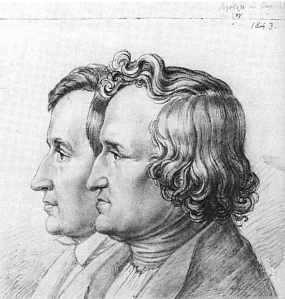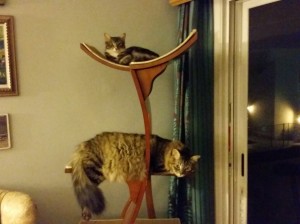Once upon a time (1987, to be precise), there were three little teaching assistants: Leslie, Susan, and Dan. In those days, when Folklore was a discipline in which you could get a Masters or PhD at UCLA, the field was going through one of its periodic convulsions in which everyone and his youngest brother was arguing about what folklore “really” is. A useful side effect of this exercise is that, once you have defined folklore to your fancy (which generally boils down to “what I like to study”), it becomes possible to define people who don’t fit that definition as “not real folklorists.” For it is a truth universally acknowledged, at least among folklorists, that all folklorists are good folklorists, and anyone whose work isn’t up to snuff isn’t a bad folklorist, or a sloppy scholar, or a just plain annoying person who won’t shut up at faculty meetings, but isn’t really a folklorist at all.
Susan studied how people told stories about things that had happened to them in the course of daily life. Dan studied people who saw visions of the Virgin Mary, space aliens, and other things that probably don’t exist in mundane reality. Leslie studied comparative mythology, especially medieval Celtic stories about journeys to the Otherworld. And all of them had been told at one point or another that they weren’t real folklorists. One day, as they were sitting around in the TA office, they came to the conclusion that all this arguing about “real” folklore was a waste of time.
“We study this stuff because it’s interesting,” one of them said.
“So why don’t we just change the name of the Center for Folklore and Mythology Studies to the Center for the Study of Real Interesting Stuff and get down to studying it rather than wasting time arguing about it?” said another. (I’m pretty sure it was me, but Susan or Dan may dispute this. It wouldn’t be a myth worth its salt if there weren’t variants.)
“Yeah!” said the third, because there had to be dialogue for everyone. “As long as it’s real interesting, you can come here and study it.”
And thus was born the idea for the Center for the Study of Real Interesting Stuff.
UCLA eventually threw its weight behind the alternative notion of changing the name of the Folklore and Mythology Center and Program to “Closed for Business.” Dan became a bona fide professor of Folklore, which is a mightily legitimating position to be in, so if he finds something interesting, it’s folklore enough to be getting on with. Susan became a corporate librarian, where she doesn’t have to worry about how people tell stories but still pays attention, because it’s interesting. And I became an academic editor and writer and intellectual flibbertigibbet, because there is just too much Interesting Stuff in the world. Ooooooh, shiny!But the Center for the Study of Real Interesting Stuff (CSRIS) never really left me. For the last two years, I’ve been working on a Novel As Yet To Be Securely Titled that mashes up a lot of Celtic mythology with steampunk, alternate history, and anything else that takes my fancy. It’s set in 1920 in a world where, due to a concatenation of circumstances, the New World was colonized by the Welsh in the late twelfth century and, rather than having a Protestant Reformation in the sixteenth century, Northern Europe reverted to its various indigenous paganisms. Oh yeah, and there are Galatian bellydancers.(“What do I want to have in this novel?” I asked myself. “Prince Madoc! And Druids! And … and bellydancers!” And for a while I thought I was sunk, until I remembered that there was a tribe of Celts who, in the second century BCE, made it as far east as central Anatolia and were still speaking a recognizably Celtic language in the fourth century CE, but who surely picked up some local habits as well ….)
It strikes me that a CSRIS is a perfect venue to talk about the background to what I’m writing, through essays, musing, rants, book reviews, and imagery: Celtic mythology, Welsh history and language, 1920s fashion and design, bellydance (particularly of a Turkish bent) and its music, Bollywood item numbers, alternate history and steampunk, paganism (neo- and otherwise), the most interesting cats in the world, and all the other shiny, pretty stuff there is to think with.
Because as long as it’s interesting, we don’t need no steenkin’ academic disciplines.


![The Gundestrup Cauldron. You could spend a lifetime thinking about the imagery on this thing. Nationalmuseet [CC BY-SA 3.0 (http://creativecommons.org/licenses/by-sa/3.0) or CC BY-SA 3.0 (http://creativecommons.org/licenses/by-sa/3.0)], via Wikimedia Commons](https://leslieellenjones.files.wordpress.com/2015/05/gundestrupkarret.jpg?w=696)
